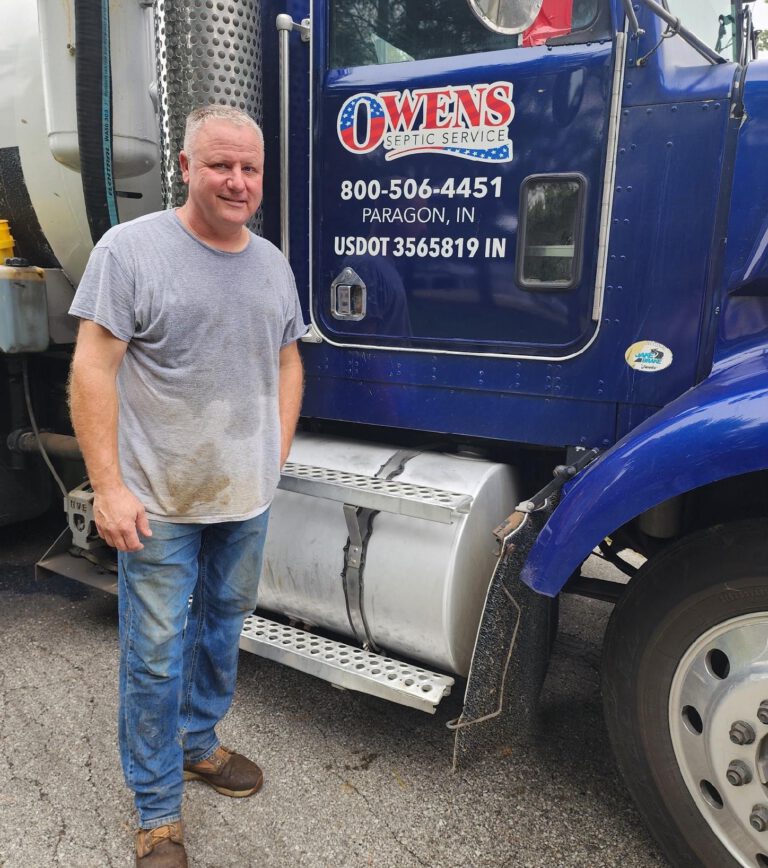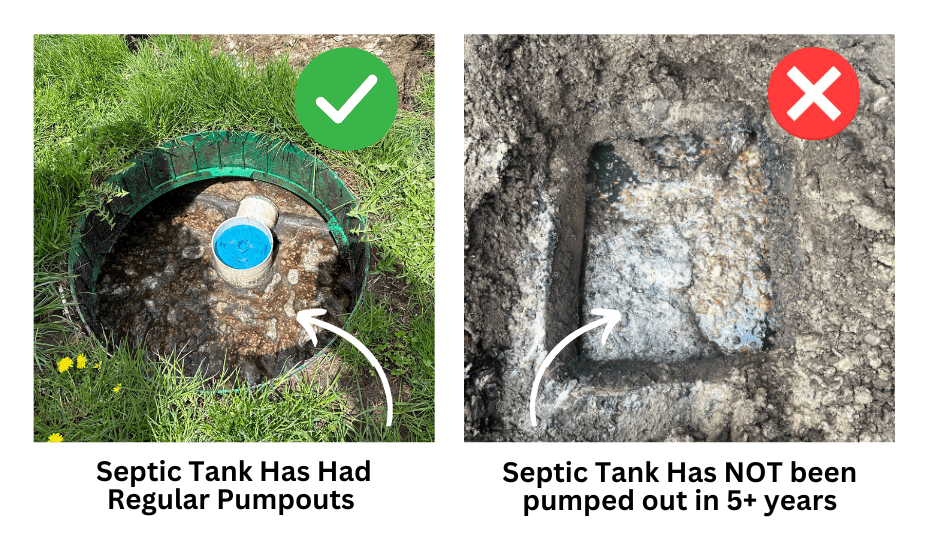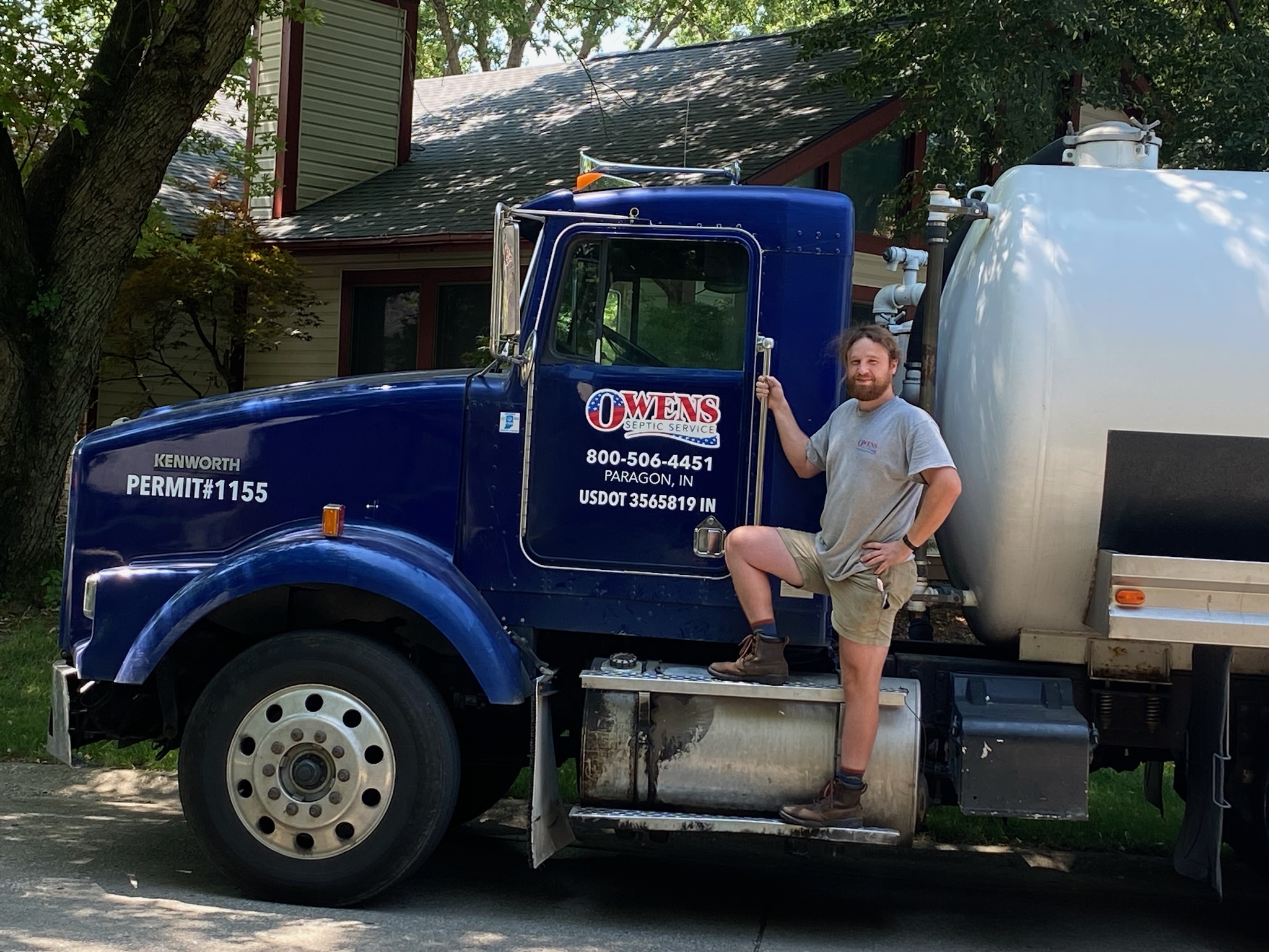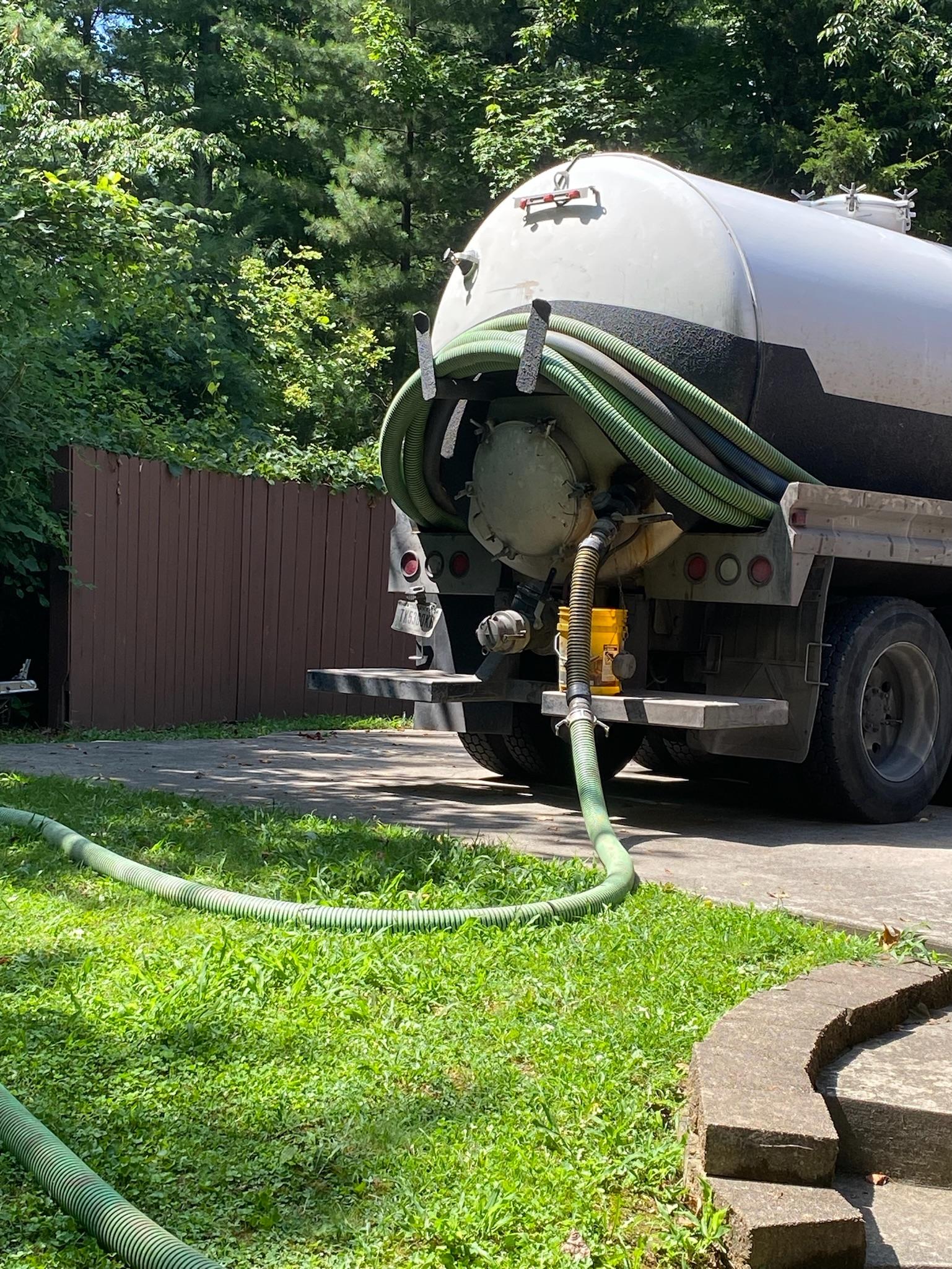We have over 30+ years of experience in septic tank services in the South Central Indiana area.
EXCELLENTTrustindex verifies that the original source of the review is Google. Great serviceTrustindex verifies that the original source of the review is Google. Our dosing tank pump failed and caused one heck of a mess. We had never used Owens septic before but hired them based on their Google reviews. Jay came out the next day and replaced the pump. He was ontime and extremely professional. Owen’s Septic pricing was a little cheaper than their competition so that was an added bonus.Trustindex verifies that the original source of the review is Google. Very prompt came out next day punctual and very pleasant and explained all to me. Definitely recommend!!! Thank you so muchTrustindex verifies that the original source of the review is Google. Great costumer service experience. From start to finish, this was a great professional team that took care of my family at a very reasonable price, and attentive service. I highly recommend them!Trustindex verifies that the original source of the review is Google. This company is great! They've pumped our tank for several years. We needed new pump and it was taken care of quickly and fair. Here when they said. It's also nice to have real person answer on phone. Thanks to whole crew.Trustindex verifies that the original source of the review is Google. We were very pleased with our service. He arrived on time, provided the service and left in a short time. He knew what he was doing and completed it in an efficient manner. They are now our go to septic service.Trustindex verifies that the original source of the review is Google. Great service! Knowledgeable and professional. Showed up when they said they were going. Definitely use this company in the future.Trustindex verifies that the original source of the review is Google. Everything was done with care and respect for the property. He offered advice about maintaining our tank and the field. Overall, it was a quick and efficient service. Thanks so much.Trustindex verifies that the original source of the review is Google. Great and fast service. Wonderful people to deal with.

When you fail to get your septic tank pumped regularly, solid waste and sludge start to accumulate in your tank which can lead to backups, clogged lines and potentially a system failure. This can result in spending thousands of dollars on your septic system.

Regular maintenance is vital for your septic system's health, and we recommend a visual inspection and cleaning every 2-4 years. Unlike some companies that merely extract liquids, leaving detrimental sludge behind, Owens Septic ensures a thorough job from the get-go. When you reach out to us, we not only remove liquids but also pump out the solids and accumulated sludge. During each pump-out, we perform a visual inspection to assess the overall health of your septic system and promptly address any potential issues that may require attention. Count on us for a job done right the very first time!
Experience top-tier lift station pumping service with Owens Septic. Our skilled technicians are equipped to handle all your lift station needs, ensuring efficient removal of wastewater. Count on us for reliable maintenance, expert troubleshooting, and a commitment to keeping your lift station operating smoothly. Trust Owens Septic for professional lift station pumping that you can depend on.
Our septic inspections are perfect for homeowners prepping their house to sell, or for home buyers who require a septic inspection before closing. During our inspections we do a thorough inspection including a test to confirm if your system is draining correctly, a sludge test to determine if it has been maintained properly, and any feedback on how your system is currently functioning.
Our pump installation service is ideal for customers who need to replace or upgrade their septic system's pump. Our knowledgeable technicians work closely with you to determine the best pump for your specific needs and install it with precision and expertise, ensuring your septic system operates at peak efficiency.
Our septic riser service is designed to make your septic system more accessible and easier to maintain. We install septic risers to extend the height of your system's access point, allowing for easier inspection, maintenance, and cleaning, while also reducing the risk of damage to your lawn or landscaping.
Our professional grease trap pumping service is designed to help businesses effectively manage and maintain their grease traps, ensuring proper functionality and compliance with sanitation regulations. We offer comprehensive grease trap pumping for both inside and outside traps, employing skilled technicians equipped with specialized tools and equipment to deliver efficient and thorough service.
We know how important it is to have access to quality and professional septic tank pumping services when you need them. That's why we highly recommend hiring experienced septic professionals like us at Owens Septic Service.


Answer: Septic tanks generally need pumping every 2 to 4 years. However, the frequency can vary based on factors like household size, water usage, and tank size.
Answer: Generally, additives aren’t necessary. A well-maintained system with regular pumping and proper use is usually sufficient. We do offer an additive if you are looking to purchase one.
Answer: Only human waste and toilet paper should be flushed. Avoid flushing non-biodegradable items, grease, chemicals, and excessive amounts of household cleaners.
Answer: Signs of a failing system include slow drains, unpleasant odors, lush green grass around the drain field, and gurgling sounds in the plumbing. Regular inspections can catch issues early.
Answer: Tree roots can damage septic systems, so it’s best to plant trees away from the drain field. Avoid building structures or parking heavy vehicles on top of the system.
Answer: Yes, a septic inspection is crucial before buying a home. It assesses the system’s condition, ensuring you’re aware of any potential issues before making the purchase.
Answer: Septic tanks are typically located a few feet underground in the same direction that your big black O pipe that leaves your basement. If you still can’t find them, try looking at your property drawings or we can help you locate them.
Answer: A septic riser is a vertical pipe that extends from the septic tank to the ground surface, providing easier access for maintenance. While not mandatory, it makes inspections and pumping more efficient.
Answer: Additives cannot replace pumping. Pumping removes solid waste, while additives may not effectively break down solids. Regular pumping is essential for system longevity.
Answer: With proper care and maintenance, septic systems can last 20 to 30 years or more. Regular inspections, pumping, and responsible use contribute to a longer lifespan.
About us
Owens Septic was established in 1992 and has been a trusted name in the septic tank pumping world. We provide services such as septic tank pumping, lift station pumping, septic inspections, pump installations, and riser installations. Please give us a call is you need any septic services in the South Central Indiana area.
Contact Info
1 (812) 597-1210 Paragon
1 (317) 210-5465 Fairland
1 (800) 506-4451
Business Hours
8:00-5:00 M-F, 9:00 - 5:00 Sat
Write to us now